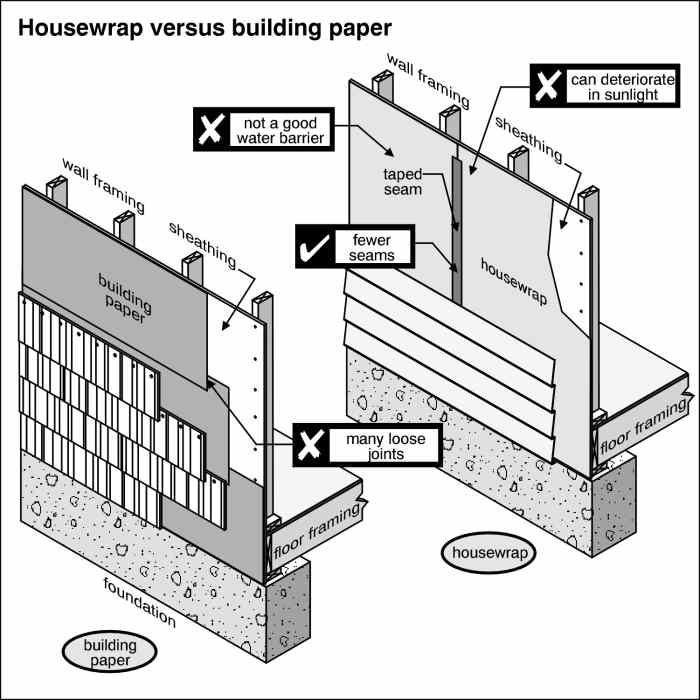Find 40 Inch Tall Wrapping Paper Solutions
I am currently a licensed contractor performing remodeling services for residential and commercial customers in Wisconsin.

House Wrap vs. Building Paper
House Wrap vs. Building Paper
There has been a debate about this for as long as I can remember. What product works better? Good old fashioned tar paper or house wrap materials like Tyvek produced by DuPont? Well that depends.
House Wrap
Pros: The most popular brands of house wrap are Tyvek and Typar. Both come in multiple roll sizes and are installed by simply stapling with a hammer tacker to the exterior sheathing. These products are made to cut down on wind washing as to protect the sheathing from moisture. The unique engineering of this product allows the building the breathe without being drafty.
Cons: The drawback? It doesn't last. This material deteriorates in sunlight and moist conditions. For some reason the staples tend to preserve the area with lots of staples in them. I removed siding that I has installed only 3 years before hand to find that the Tyvek was gone, reduced to dust except in the area I had used a lot of staples. This product also allows some moisture transfer through it to the sheething making it a poor product choice for behind masonry or cultured stone.
Building Paper
Pros: 15 lb. tar paper felt underlayment has been the protectant of choice for over 100 years. It requires more work to put up but performs exactly the way you would expect. If you do a good job with the installation and do it properly, the building paper will last forever (or at least as long as the house). You can use it behind any type of siding because of its water-repelling abilities. it is also pretty cheap compared to Tyvek or Typar. However, with the extra labor involved it may be fairly evenly pricing if time is a factor in your project.
Cons: The drawbacks? It has a lot of seams which means that there are more chances for air sealing issues. As I stated before, this product has to be put on 100% correctly to be affective.
So Which Is Better?
In the end, building paper allows you to do everything you want to without thinking about it. There is no complicated science behind it and that is what has allowed it to still be one of the most widely used products today... and still one of the greenest.
Read More From Dengarden
winn on September 25, 2014:
one major problem guys ; over twenty years ago mastic and other major vinyl siding manufacturers cause too much movement of vinyl siding products and void warranties. cant use on vinyl siding
Mark on June 25, 2011:
Julio has got it right.
Julio Fernandez on May 20, 2010:
I replaced siding on a house over 60 years old. It had tar paper behind cement shingles and there was no evidence of rot. I have heard horror stories about "house wrap" and wonder why people pay extra money for this product. Having installed both products I do not find the home wrap to be that much easier to install (or quicker). I would save your money and stick with the old school method (tar paper).
Utah Carpenter on May 14, 2010:
I am repairing a house that had house wrap installed behind the wood siding. It allowed moisture into the sheathing and studs. The house is only 13 years old. I would recommend tar paper.
Find 40 Inch Tall Wrapping Paper Solutions
Source: https://dengarden.com/home-improvement/Building-Paper-vs-House-Wrap-Which-One-is-Better